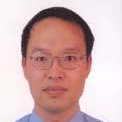
Jing Liu
Work place: Technical Institute of Physics and Chemistry, Chinese Academy of Sciences, Beijing, China
E-mail: zsdeng@mail.ipc.ac.cn
Website:
Research Interests: Medicine, Medicine & Healthcare, Computational Biology, Biology, Biology & Life Sciences
Biography
Jing Liu received his B.E. and B.S. in July, 1992, and Ph.D. in February 1996; all from Tsinghua University. He had ever been an Assistant Professor there, a Postdoctoral Re- search Associate at Purdue University, and a visiting scholar of Massachusetts Institute of
Technology. Since July 1999, he had been a Professor of the Chinese Academy of Sciences (CAS) and be- came professor of Tsinghua University since August, 2008. He is an author of 6 popular Chinese books, 10 invited book chap- ters and over one hundred and seventy journal papers. He also holds more than 80 China Patents some of which have been successfully transferred to industry. Dr. Liu’s current research interests include bioheat and mass transfer, nano medicine and biology, as well as thermally enabled biotechnology and medical instrumentation. He is a recipient of the National Science Fund for Distinguished Young Scholars of China, National Science and Technology Award for Chinese Young Scientist, and four highest teaching awards from the CAS.
Author Articles
A Hybrid Spectral Conjugate Gradient Method with Global Convergence
DOI: https://doi.org/10.5815/ijmsc.2022.02.01, Pub. Date: 8 Jun. 2022
The spectral conjugate gradient (SCG) method is one of the most commonly used methods to solve large- scale nonlinear unconstrained optimization problems. It is also the research and application hot spot of optimization theorists and optimization practitioners. In this paper, a new hybrid spectral conjugate gradient method is proposed based on the classical nonlinear spectral conjugate gradient method. A new parameter is given. Under the usual assumptions, the descending direction independent of any line search is generated, and it has good convergence performance under the strong Wolfe line search condition . On a set of test problems, the numerical results show that the algorithm is effective.
[...] Read more.Thermal Enhancement of Capsaicin on Target Tissue Involved in Hyperthermia
By Peng Zeng Zhong-Shan Deng Jing Liu
DOI: https://doi.org/10.5815/ijem.2011.03.06, Pub. Date: 5 Jun. 2011
Local thermal enhancement in target tissue is of great interest in tumor hyperthermia. In this study, we proposed a brand-new thermal enhancement protocol for tumor hyperthermia using heat generated from thermogenesis of capsaicin, which can safely deliver a totally localized heating to target tissue. A healthy male volunteer was recruited, whose partial areas of opisthenar and forearm were smeared with 1% (w/w) capsaicin solution, to determine the increase of thermogenesis in local area of human body. In addition, animal experiments on several healthy Kunming (KM) mice (20-22g) were performed to test the feasibility of this capsaicin based thermal enhancement method. Preliminary experiments on the volunteer showed an effective temperature increase in the skin area smeared with capsaicin solution. Animal experiments indicated that distinct enhancement in heating effect presents in the target tissue of mice where capsaicin solution was introduced. The thermal enhancement ability of capsaicin, therefore, suggests that capsaicin can be used as a potential therapeutic adjuvant to locally enhance heating effects in target tissue during tumor hyperthermia.
[...] Read more.Parallel Algorithms for Freezing Problems during Cryosurgery
By Peng Zeng Zhong-Shan Deng Jing Liu
DOI: https://doi.org/10.5815/ijieeb.2011.02.02, Pub. Date: 8 Mar. 2011
Treatment planning based on numerical simula-tion before cryosurgery is an indispensable way to achieve exactly killing of tumors. Furthermore, intraoperative pre-diction based on monitoring results can lead to more accu-rate ablation. However, conventional serial program is diffi-cult to meet the challenge of real-time assistance with com-plex treatment plans. In this study, two parallel numerical algorithms, i.e. parallel explicit scheme and Alternating Direction Implicit (ADI) scheme using the block pipelined method for parallelization, based on an effective heat capac-ity method are established to solve three-dimensional phase change problems in biological tissues subjected to multiple cryoprobes. The validation, speedups as well as efficiencies of parallelized computations of the both schemes were com-pared. It was shown that the parallel algorithms developed here can perform rapid prediction of temperature distribu-tion for cryosurgery, and that parallel computing is hopeful to assist cryosurgeons with prospective parallel treatment planning in the near future.
[...] Read more.Other Articles
Subscribe to receive issue release notifications and newsletters from MECS Press journals